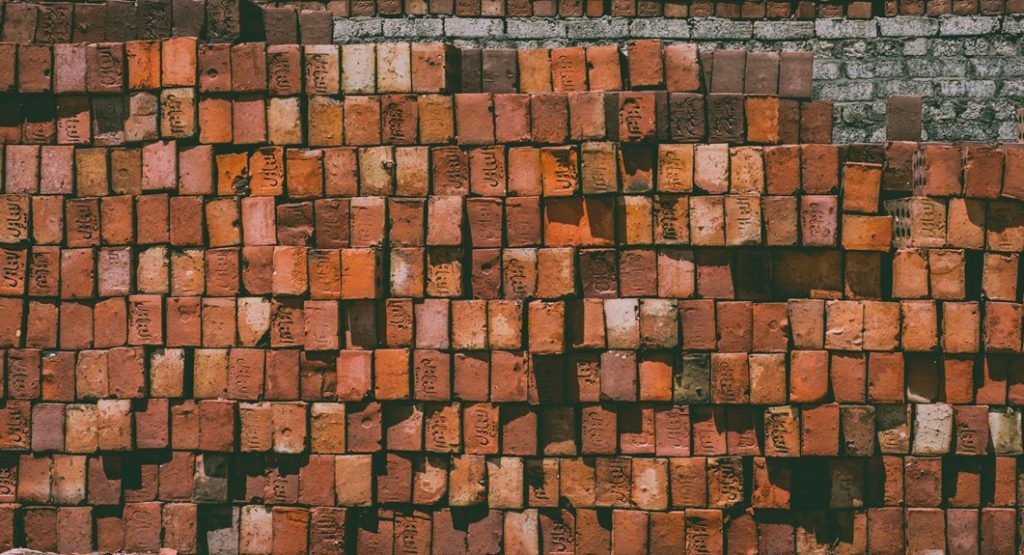Burnt clay bricks are widely used construction materials created by firing clay in kilns to produce robust blocks. They are manufactured through various methods, such as the stiff-mud or soft-mud techniques, which impact their shape and strength.
These bricks are composed of natural materials including clay, silica, and iron oxide, which bestow upon them properties like high compressive strength and low water absorption. There are different classifications of bricks, such as first and second class, each suited for specific applications.
To delve deeper into their production processes and benefits, please continue reading.
Manufacturing Process and Techniques
The manufacturing process of burnt clay bricks involves several meticulously controlled steps that transform raw clay into robust building materials.
Initially, clay is tempered by mixing it with a suitable amount of water in pug mills, creating a homogeneous, plastic mass ideal for shaping. There are three primary forming methods: stiff-mud, soft-mud, and dry-press. Stiff-mud entails extruding de-aired clay through dies, while soft-mud involves placing clay into moulds, which are often coated with sand to prevent sticking. Manual moulding requires skilled operators to fill and vibrate the moulds, although mechanical presses can enhance consistency.
Once formed, the bricks are dried to eliminate moisture, which is crucial for preventing cracking during firing. Proper drying, whether achieved through sun-drying or in controlled chambers, is essential to maintain the quality of the bricks before they’re fired in kilns.
Raw Materials and Additives Used
Raw materials for burnt clay bricks primarily consist of natural clays, silica-rich sands, and various additives that enhance the properties of the final product.
Clay, the main component, contains alumina and silica, which provide the bricks with strength, plasticity, and workability. Silica, mostly in the form of sand or minerals, contributes to hardness and aids in controlling shrinkage during the firing process. Alumina increases plasticity, making the moulding process easier, while iron oxide imparts the characteristic reddish colour and enhances durability.
Additives such as sand help regulate plasticity, reduce warping, and manage shrinkage. Other materials like magnesium oxide, fly ash, and lime are incorporated to modify colour, improve firing efficiency, and strengthen the bricks.
These raw materials are meticulously selected and prepared through crushing and grinding to ensure quality and consistency.
Key Physical and Mechanical Properties
| Property | Description |
|---|---|
| Water absorption | Maintains low levels, ensuring long-lasting durability |
| Specific gravity | Typically varies, influencing overall strength |
| Compressive strength | Essential for supporting heavy loads and structural integrity |
| Surface quality | Exhibits a dense, smooth, and crack-free finish for enhanced longevity |
Types and Applications of Burnt Clay Bricks
Burnt clay bricks are available in a variety of types, each tailored for specific applications in construction, reflecting their quality, manufacturing methods, and intended use.
First-class bricks are thoroughly burnt, uniform in shape, and possess high strength, making them suitable for a wide range of construction projects.
Second-class bricks, while offering moderate strength, are often employed for concealed masonry work.
Third-class bricks, which are under-burnt and softer, find their place in temporary structures.
Over-burnt bricks, also known as Jhama bricks, are fired at elevated temperatures and are typically used as aggregate.
Conversely, kiln-rejected bricks are usually discarded or repurposed in other applications.
- Extruded bricks are characterised by their uniformity and cost-effectiveness, as they’re produced by forcing clay through steel dies.
- Moulded bricks are slightly irregular in shape, having been shaped either by hand or machine.
- Fire bricks are engineered to withstand high temperatures, making them ideal for use in furnaces.
- Paving bricks are dense and durable, perfect for creating robust pavements.
The diverse range of burnt clay bricks ensures that there’s a suitable option for every construction need, enhancing both the functionality and aesthetics of buildings throughout the UK.
Environmental Impact and Sustainable Practices
Environmental concerns surrounding burnt clay bricks are increasingly coming to the forefront due to their substantial contribution to pollution and resource depletion. The production of these bricks releases significant amounts of CO₂ annually, representing a notable portion of global greenhouse gases. Each brick fired emits a considerable amount of CO₂, primarily from kiln firing that utilises coal. If not effectively managed, these emissions may escalate dramatically, contributing further to climate change.
In addition to carbon emissions, brick kilns also release harmful pollutants such as sulphur dioxide, nitrogen oxides, and particulate matter, adversely affecting air quality and public health. The extraction of clay and the use of agricultural land can lead to soil degradation and disruption of local ecosystems.
However, there are viable paths towards a more sustainable brick industry. Embracing modern kiln technologies, exploring alternative fuels, recycling old bricks, and implementing less energy-intensive methods such as sun drying can significantly reduce environmental impacts.
Conclusion
Burnt clay bricks are robust and adaptable building materials produced through controlled heating processes that enhance their strength and stability. These bricks are crafted from natural raw materials, often with specific additives that influence their characteristics.
Various types of burnt clay bricks cater to different construction requirements, ranging from load-bearing walls to decorative facades. Although the production of these bricks can have environmental implications, implementing sustainable practices can significantly minimise waste and energy consumption. This makes burnt clay bricks a conscientious choice for eco-friendly construction projects.
A thorough understanding of these factors is essential for selecting the most suitable bricks for any building endeavour.

